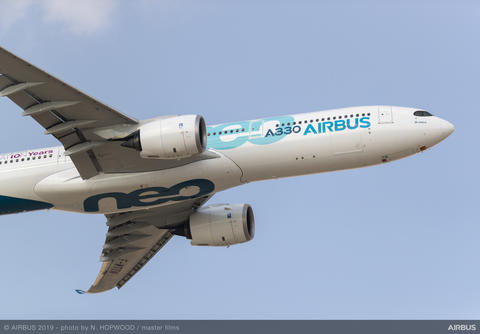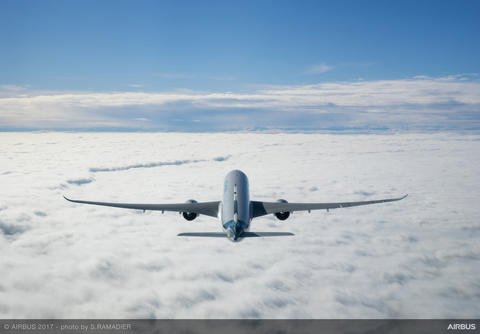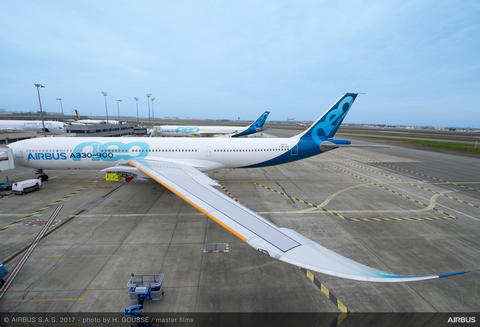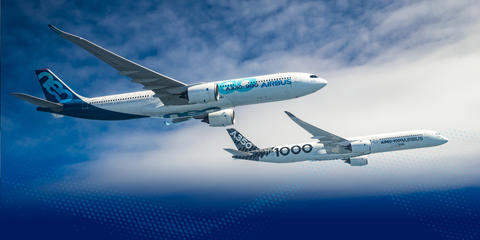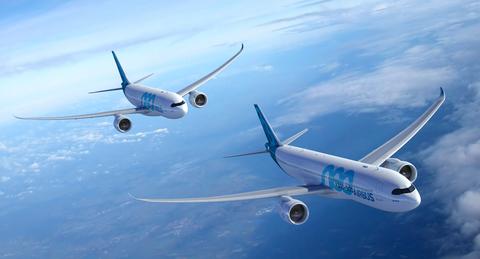Airbus A330neo Family’s exclusive latest generation engine – the Trent 7000 from Rolls-Royce – builds on the legacy of the predecessor, the Trent 700 (powering the A330ceo), while combining all the most sustainable credentials from the very latest Trent XWB, the world’s most efficient large civil engine which powers the A350.
The Trent 7000 offers a step change in performance over the Trent 700, thanks to its efficient fuel consumption, which enables 14% better fuel burn delivering significant reduction in emissions and operating costs.
Higher bypass ratio = higher efficiency and lower noise
As with the A350, the A330neo’s high power plant propulsive efficiency was achieved in part by having a very large front fan with hollow and fully swept wide-chord blades with a bypass ratio of around 10:1 – which is double that of the Trent 700’s 5:1 bypass ratio. Not only does a higher bypass ratio reduce fuel burn and CO2 emissions, but the Trent 7000’s fan, being a generous 112 inch in diameter, moves greater volumes of air yet doesn’t need to spin as fast as the Trent 700’s smaller 97 inch fan – which means it is quieter by 6dB, while conferring a cumulative noise margin of 16EPNdB below the limits for ICAO’s Chapter 4 noise standard!
In addition, the new engine features a smaller, high pressure-ratio core which maximises its thermodynamic efficiency due to the higher operating temperatures and pressures, while still keeping the combustor’s NOx emissions compliant with ICAO’s CAEP/10 standard, and a 27% NOx margin below the older CAEP/6 datum.
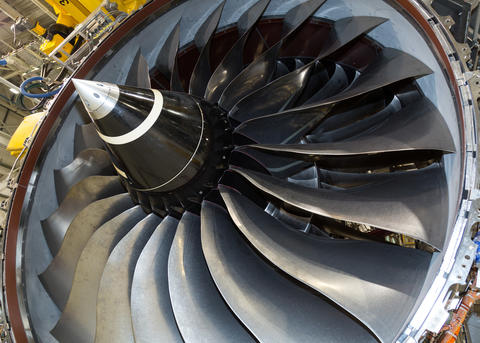

Overall, with the fully swept, wide-chord fan technology – and of course the aircraft’s advanced 3D optimized wing aerodynamics and pylon integration – the A330neo’s resulting fuel burn per passenger is improved by around 14 per cent, compared with the A330ceo. Low fuel burn also means low emissions – the Trent 7000 meets both current and proposed future emissions standards for aero engines, as well as those for noise.
Sustainable operations and compliance with future CO2 emissions standards
Importantly, the A330neo’s new engines’ lower CO2 output helps to position this aircraft into a new class when it comes to compliance with the latest environmental and sustainability regulations: In May this year the A330-900 became the first large airliner to be certified by EASA for ICAO’s new CO2 emissions standard. Moreover, with this milestone, Airbus became the first manufacturer to receive such certification for any commercial aircraft world-wide.
The new requirement was developed by the UN’s ICAO Committee on Aviation Environmental Protection (CAEP) which requires that from 2028 all aircraft in production must embody the required low CO2 emissions.
The A330neo is thus leading the way in terms of sustainable operations – more than six years ahead of the deadline. Furthermore, not only does the engine produce less CO2 from the reduced fuel consumption, but the engine is also fully pre-compliant with sustainable aviation fuels (SAF), to reduce the aircraft’s environmental impact yet further.
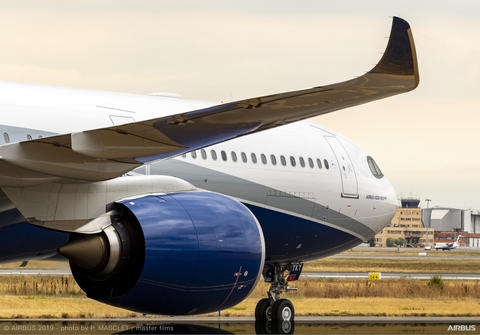
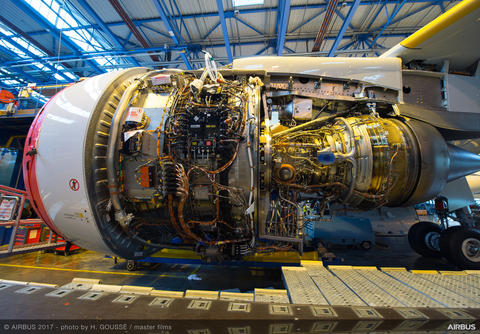
Designed for smooth operations and maintenance
Aside from the Trent 7000’s latest fan design, new component technology is employed throughout the engine to enhance operations and maintainability. Whether that’s the BLISK combined ‘BLaded-dISK’ design in the compressors or the advanced modulated turbine blade tip clearance control system, each technology serves to increase customer value and revenue benefits.
Complementing the advanced turbomachinery, the Trent 7000 brings benefits with Rolls-Royce’s real-time Engine Health Monitoring (EHM). EHM samples key engine parameters and transmits them to the ground using the on-board ACARS system. This helps to predict any issues before they occur and thus avoids operational delays and unplanned downtime. Rolls-Royce has also implemented what it calls “Lifing Insight”, a service which uses advanced parametric modelling and data from the engines themselves to calculate the optimum life of key components – particularly valuable for high-cycle operations. This keeps the engines on-wing for longer and keeps the costs down for airlines.
A330neos themselves are equipped with a dedicated on-board maintenance and operations data-capture/transmission module called “FOMAX” which can process up to 24,000 aircraft parameters during the flight. In the near future operators of the aircraft will be able to use the power of FOMAX to record large amounts of engine data in addition to the aircraft systems data which it already processes today. Notably, FOMAX allows operators to quickly download all this data using its built-in Wi-fi and 4G connectivity on arrival at the gate for subsequent predictive maintenance analysis.
Performance advantages
The new engine’s low fuel burn and high thrust is instrumental to facilitating a new increased take-off weight capability of 251 metric tonnes (for up to six tonnes more payload) while enabling the A330-900 to achieve a 7,200nm long range with up to 300 passengers – an increase of more than 650nm compared with its predecessor the A330-300.
As well as catering for long flights of around 14 hours, the A330neo’s engine is equally adept for efficiently and reliably handling shorter sectors and high-cycle regional operations. In addition, the demonstrated performance of Trent 7000 meant that in 2019 the EASA was able to award the A330-900 for ETOPS (Extended-range Twin engine aircraft Operations) “beyond 180 minutes” diversion time. This achievement means that operators of the A330neo can benefit from the most efficient, reliable and direct long-range routings. The approval includes the capability for 285 minute ETOPS – which extends the potential air diversion distance to around 2,000nm if needed.
